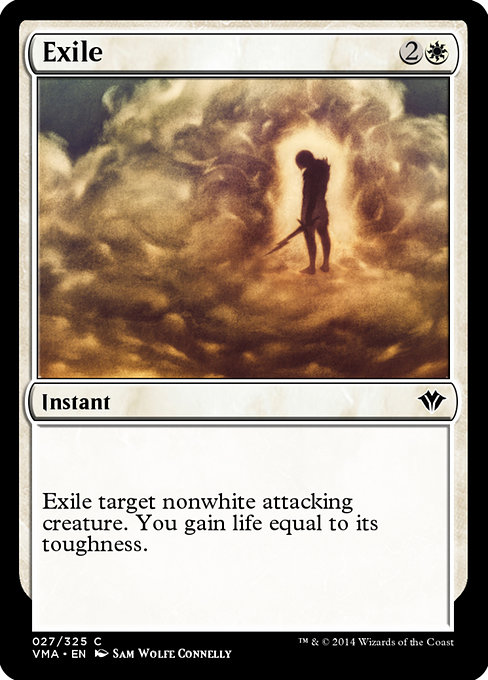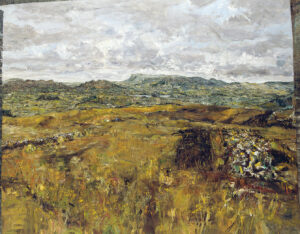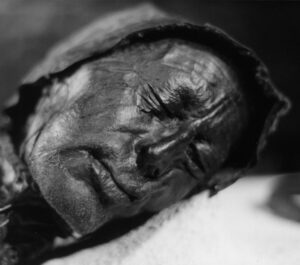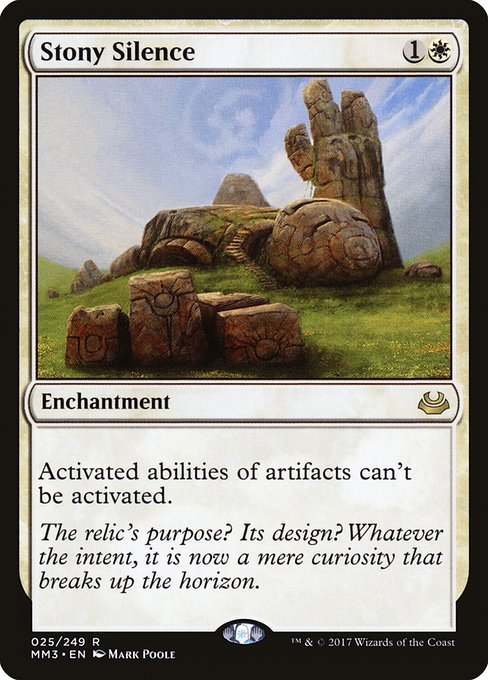Today’s Swamp Talk is in three parts. I want to write about Bojuka Bog and exiling our pasts. And, conversely, about how hard it is to fight that. But first, I have to describe a scene from my life before my delving into Magic: The Gathering.
Memories Below the Water
In February 2019, I got a call from my brother. Our father had died in his home in southwest Indiana. He was 66. My mother had died of a long debilitating disease just 113 days before. I was now the oldest in my family and in charge of taking care of everything in that house. Daunting, of course. My entire history, as well as my brother’s and my dead parents’. I left that day to embark on an 8-hour drive to my childhood home through maddening torrential winter rain. I arrived at a flooded scene. The worst rain in years had swamped my dad’s house. He was a bit of a hoarder. Lots of family stuff crammed the garage. It took the brunt of the water damage.
My first instinct?
Try and save it all.
But quickly on the heels of that was another instinct: Throw it all away…exile it.

The Power of Preservation
Any discussion of the rhetoric of the card Bojuka Bog has to start with the obvious—the delicious alliteration of the beginning B’s. Moreover, the card name falls into iambic dimeter. In poetic parlance, that means there are two packets of syllables with two beats each. Unstressed syllable, stressed, unstressed, stressed. It could look like this:
bo-JU-ka-BOG
The rhetorical attention to sound is, I suspect, a big part of Magic: The Gathering’s staying power. And, no doubt, a large part of a card creation’s process. (A recent example: Ledger Shredder. That name is trochaic, the opposite of iambic. Stressed syllable, unstressed syllable. LEDG-er SHREDD-er. Of course, as players, we love the art and the card’s abilities within the wider game. However, humans love sounds, syllables, words, and we love saying certain pleasurable words over and over. Think of the way many players (like myself) recite the phases of play: “Untap, upkeep, draw…move to combat…aaand go.” What’s more: when a word matches the meaning/concept it represents, we tend to love it even more. And here bog does a good job of sounding like a muddy, wet, acidic, mossy area. If you say –OG, pronounced like awwg, one can see a foul inflation of a gas bubble yawning awake and exploding with a gross belch. A bog is not a place one retreats to or visits for rejuvenation.
And this leads to the card’s ability. It’s a common land that taps for black. However, that’s almost incidental since—
Bojuka Bog enters the battlefield tapped.
When Bojuka Bog enters the battlefield, exile target player’s graveyard.
Oh boy. This card is such a good T4 or T5 play, especially if you’re playing against a graveyard/recursion deck. Imagine jamming this against a Living End deck, or Reanimator. It can be a solid late game topdeck as well. If it’s in your initial hand, the value goes down considerably. Bojuka Bog needs to build up time and turns before it. Cards need to pile. The dead need to build up. A fresh match, a new world, doesn’t have bogs. It can’t pile up corpses.

Ironically, Bojuka Bog does the exact opposite of what a real bog does: it exiles what’s preserved. Real bogs are famous–like peat bogs in Denmark, Germany, Ireland–for having a preservative power. This ability is demonstrated upon human bodies that had the bad luck of falling in or, more likely, being thrown there after a ritual murder, sacrifice, or execution. Some bodies have been so well-preserved in bogs that fingerprints can be taken millennia later, like Tollund Man. Severed heads or body parts are commonly found because those who disposed of the bodies wanted to stop wiedergänger from returning—in other words, a zombie.

Tollund Man is around 2,500 years old, found in Denmark, and thought to be a ritual sacrifice. You can
In a roundabout way, Bojuka Bog does what many ancient peoples hoped to do—it removes zombies or returning spirits from the afterlife or the graveyard. It removes any threat of the past reanimating. What’s dead stays below.
But what one’s goal is with Bojuka Bog makes me think of how consistent the card appears. Since its introduction in Worldwake, the art has always been Howard Lyon’s moody Dutch-angle painting. One could be forgiven for initially passing over the decayed yet preserved hand cramped in death, and the man’s face stuck in agony just breaking the surface of the water. The body must have just come up because it has russet colored hair—an effect that happens to hair stuck in peat bogs for a long time. It is an example of perfect attention to scientific detail even inside a fantastical universe. I’m also drawn to how active and alive the world is in Zenikar where the Bojuka Bog exists. The world will eat you, clobber you, smother you. It stands, strides, explodes.

The Worldwake set had a series of dual color lands that morphed into creatures for a cost. Celestial Colonnade, Creeping Tar Pit, Lavaclaw Reaches, Raging Ravine, Stirring Wildwood, with the first one in this list being the most powerful as a 4/4 creature with flying and vigilance. Many of the cards show art with the land come to life and attacking (Walking Atlas and Lodestone Golem come to mind). Of course, this set also included Tectonic Edge, a colorless land that, when sacrificed, can destroy other nonbasic lands. Bojuka Bog’s larger world, its ecology, is volatile. It’s vicious and reactive–it’s alive with memory.
What We Find When Looking Into the Mire
I chose Bojuka Bog for the second in this series on the “real world” effect on players, because the idea of exiling a graveyard haunts me. I identify with it. I know it must seem over the top to analyze these small pieces of cardboard so minutely, so autobiographically. But I have to think that anything we spend so much time with has to play a part in our rhetorical and symbolic framing of the everyday world. I mean, the cards are rhetorical. They hold a persuasive power. Their language, their visual dynamics, their (sometimes) financial depth. We value these rectangles because of what they represent. When a Bojuka Bog blasts our potential answers to a match from the board state…well, symbolism feels quite real then.
That day when I arrived at my father’s house that acted as a temporary tomb, I wanted nothing more than to banish it all. The world, my world, was swallowing me. The land had jumped up and struck me in the chest. The bog of my childhood was begging for exile. Why? Because I was not then, and I am not now, prepared or interested in combating the reanimated graveyard of my father’s hoarded treasures.

There is a moment after your graveyard is exiled with Bojuka Bog, where you might clench your teeth in despair. Your win condition is cancelled. Your plan is ruined. However, let me suggest something. You should remove your graveyard to the exiled area; you should pick up your remaining hand; you should scan the cards, maybe give them a flick—and here (this moment is the important point) you should look up and say: “And in response, during your end step…”
Kyle Winkler (he/him) is a teacher and fiction writer. While he was pre-teen when Magic: The Gathering was released, he didn’t start playing until recently. He’s the author of the cosmic horror novella (The Nothing That Is), a collection of short stories (OH PAIN), and a novel (Boris Says the Words). He’s trying to make Obzedat, Ghost Council work as the commander for his most recent deck.

